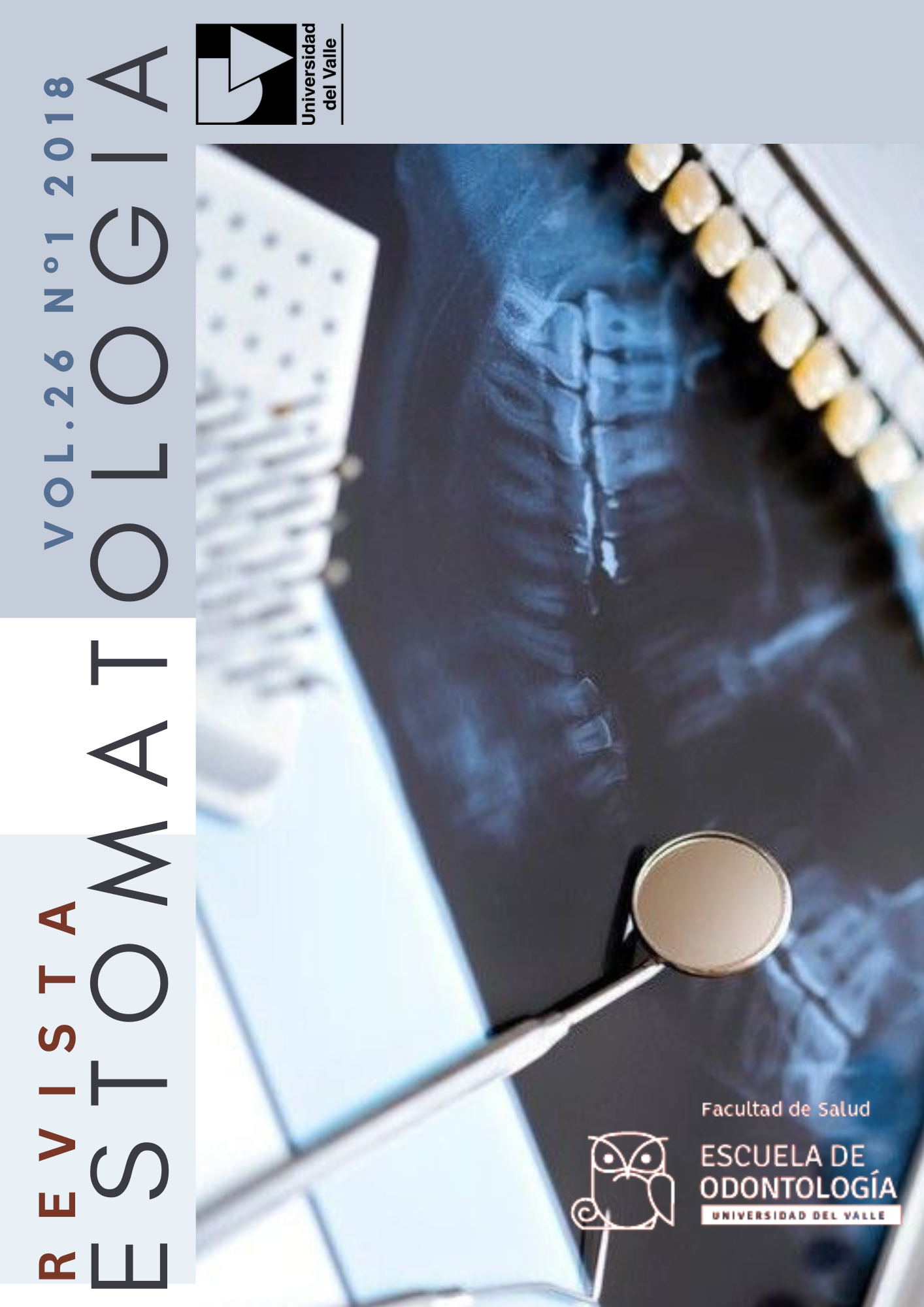Factors related to the donation of blood in students of dentistry of a university in Cali, Colombia 2017
Main Article Content
Background: The different uses given by the medicine to the donated blood and its derivatives have made their demand increase, but in turn it has been demonstrating the increase in the gap that exists between
the donation of blood and the requirement of this.
Objective: to identify the attitudinal, social, economic, religious and cultural factors related to the intention to donate blood in a population in Cali, Colombia.
Materials and methods: A descriptive observational study was carried out in a sample of 197 students from the School of Dentistry of the Universidad del Valle. The information was collected through the application of a survey. The variables collected in the study were age, sex, semester, positive and negative factors at the
time of donation. A univariate analysis was performed.
Results: It was found that 74.8% of the total sample had not donated blood previously and 25.2% had donated blood; Of these, 7.6% had donated in the last year, 90.1% of the total population surveyed would
be willing to donate blood in the future. Among the factors that influence negatively were mistrust of sterility of the instruments (65%), the donation had a lucrative purpose (40%).
Conclusions: The results found indicate that in this population there is a low frequency of donation. Many of the respondents said that it would be helpful to receive more information and education about it.
- Blood
- blood donors
- barriers
- motivation
- blood banks
- transfusion
2. Ngoma AM, Goto A, Yamazaki S, Machida M, Kanno T, Nollet KE, Ohto H, Yasumura S. Barriers and motivators to blood donation among university students in Japan: development of a measurement tool. Vox sang. 2013;105(3):219-24.
3. Castillo CM, Ramírez C. Tamización de malaria en donantes de sangre de Cali, Colombia. Biomédica. 2005;25(2):203-10.
4. García Gutiérrez M, Sáenz de Tejada E, Cruz JR. Estudio de factores socioculturales relacionados con la donación voluntaria de sangre en las Américas. Rev Panam Salud Publica. 2003;13(2/3):85-90.
5. Vásquez VV. Factores asociados a la donación voluntaria de sangre en estudiantes de ciencias de la salud
de una Universidad Pública de Lima Metropolitana, año 2014 [Tesis]. Lima: Perú. Universidad Nacional Mayor de San Marcos. p 106.
6. Vásquez M, Ibarra P, Maldonado M. Conocimientos y actitudes hacia la donación de sangre en una población
universitaria de Chile. Rev Panam Salud Publica. 2007;22(5):323-8.
7. Cruz F, Moreno J, Fonseca A, Serrano C, Sierra P. Aspectos motivacionales de donantes voluntarios de sangre en un móvil de recolección de la ciudad de Bogotá, Colombia. Rev UDCA Act & Div Cien. 2012;15(1):19-26.
8. Thomson R, Bethel J, Lo AY, Ownby HE, Nass CC, Williams AE. Retention of “safe” blood donors. The Retrovirus
Epidemiology Donor Study. Transfusion. 1998;38(9):359-67.
9. Hosain GM, Anisuzzaman M, Begur A. Knowledge and attitude towards voluntary blood donation among Dhaka University students in Bangladesh. East Afr Med J. 1997;74(9):549-53.
10. Wiwanikit V. Knowledge about blood donation among a sample of Thai university students. Vox Sang. 2002;83(2):97-9.
11. Hupfer ME, Taylor DW, Letwin JA. Understanding Canadian student motivations and beliefs about giving
blood. Transfusión 2005;45(2):149-61.
12. Cardona-Arias J. Conocimientos, actitudes y prácticas sobre la donación de sangre en estudiantes universitarios. Med UPB. 2011;30(2):121-31.
Downloads
Los autores/as conservan los derechos de autor y ceden a la revista el derecho de la primera publicación, con el trabajo registrado con la licencia de atribución de Creative Commons, que permite a terceros utilizar lo publicado siempre que mencionen la autoría del trabajo y a la primera publicación en esta revista.





